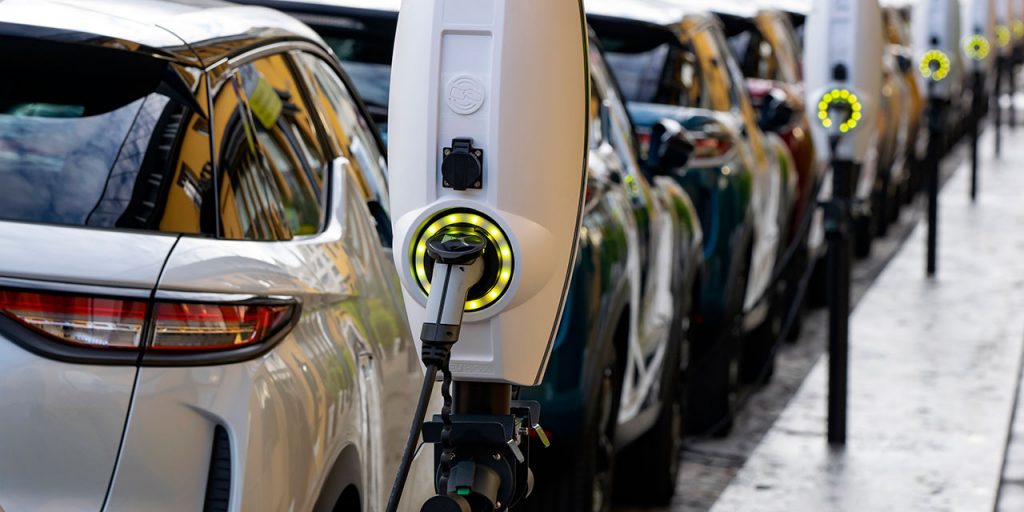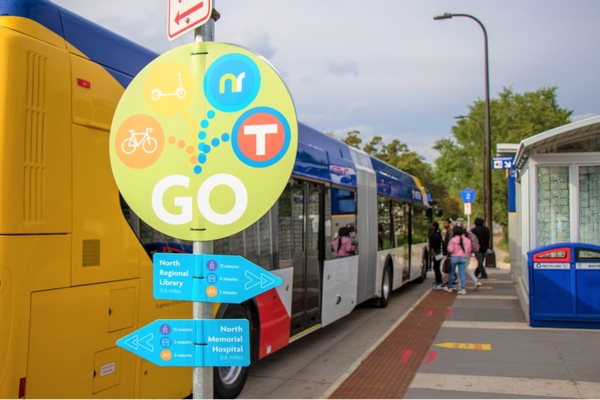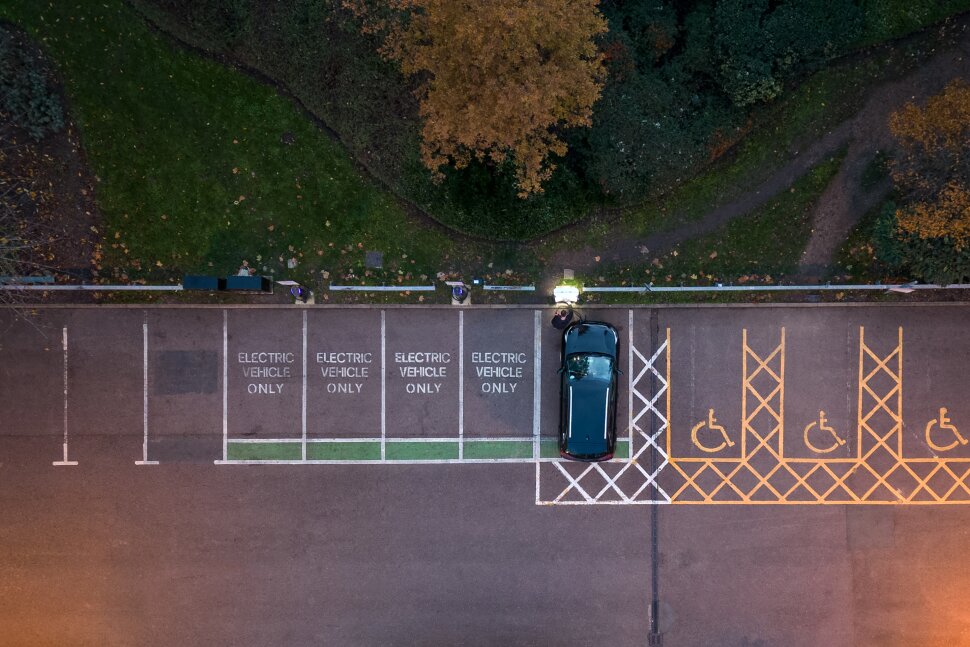In 2016, the California Senate passed SB-32, requiring that state greenhouse gas emissions be reduced to 40% below 1990 levels by 2030. In 2018, California Governor Jerry Brown issued EO-B-55-18, establishing the statewide goal of achieving carbon neutrality by 2045. Today, nearly six years later, the state is not on track to meet either target.
To move forward, though, state officials must first look at how its residents move around. With the largest amount of both statewide and national emissions coming from the transportation sector, a transition to clean transportation is long overdue. But are electric vehicles (EVs) the solution?

On one front, yes. Created by researchers at the Massachusetts Institute of Technology, this carbon counter allows you to compare greenhouse gas emissions across different car models. The tool tracks internal combustion engine vehicle emissions to emit up to three times more grams of carbon dioxide equivalent per mile (gCO2eq/mile) than most electric vehicles. Even after taking into account the higher initial emissions required to manufacture electric vehicles and the electricity required to charge them, the proof is clear: EVs are still significantly cleaner than non-EVs throughout their respective lifecycles.
However, with all the promises of EVs, there remain several limitations.
Coal & the Electric Grid
In more rural regions, where the electric grid can still be largely coal-dependent, plugging in an EV may draw nearby coal plants to burn more coal. The environmental effects may be less beneficial than, for instance, using a hybrid car, which uses a battery but runs on gasoline.
As such, it is incumbent upon utility companies to make the transition, leaving behind coal in preference for cleaner sources such as natural gas, wind, and solar power. If such a transition to a zero-carbon grid is made and the mandate that all new cars sold in 2035 and beyond are zero-emission is upheld, then emissions from vehicles would decrease substantially.
Zip-Code Constraints
Though EVs have proven to be a key fighter in slowing down climate change, the issue of affordability still stands. In California, the average person still cannot afford to purchase an EV.
According to a CalMatters analysis of zip codes in California, the communities with higher concentrations of electric vehicles were, unsurprisingly, white- and Asian-dominated and high-income. In contrast, ZIP codes with large Latinx and Black and low-income populations have extremely low concentrations of electric vehicles. This socioeconomic disparity in EV ownership is no coincidence.
So, given state mandates that require a gradual increase in the proportion of new cars sold to be electric, how can we mitigate the higher upfront costs that would impose financial constraints on lower-income Californians?
Under the Internal Revenue Code Section 30D, those who buy a new, qualified plug-in EV or fuel cell electric vehicle may qualify for up to $7,500 in credit. However, this credit discounts that the average new EV costs nearly $9,600 more than the average new non-EV. Access to EVs remains inequitable.
Expanding the qualifications to allow greater credit on sales of used EVs would do more to encourage the transition to clean transportation. But opening access also relies on automakers. To incentivize companies to lower the costs of their EV models, the California Air Resources Board (CARB) established some credits for companies selling cars at a 25% discount via community-based programs or offering passenger cars for less than $20,000 and light trucks for under $27,000. This is a good start, but it is not enough. Very few of the available new cars on the market are actually under these costs, and looser qualifications for such credit would do well to encourage automakers to tangibly close the price gap between gas and electric cars in the next decade.
Furthermore, inadequate infrastructure continues to prove an obstacle to accessing EVs. Communities with few EV owners lack enough reliable charging stations, and charging networks lack the incentive to build stations in ZIP codes where demand seems to be low. This results in a cyclical process of inhibiting both access and incentive for low-income Californians to make the transition to driving EVs. If the state is to be serious about reaching its goals toward carbon neutrality, CARB should develop and facilitate mutualistic relationships between itself, automakers, and charging networks to ultimately appeal to those who remain unconvinced of the EV movement.
But it shouldn’t stop there. Malcolm Johnson, a research fellow at Berkeley Law’s Center for Law, Energy, & the Environment says, “city planners and EV charging companies can’t just drop chargers in low-income areas and call it ‘equity.’”
Rather, any such progress must put the community at its center. The Greenlining Institute’s four guiding principles for equitable deployment and implementation of charging infrastructure emphasize the importance of building charging stations in areas that residents of disadvantaged communities can actually access—this means building outside of just company parking lots, where access is often restricted to employees, and along major highways, where the target consumers are commuters rather than community residents themselves.
“City planners and EV charging companies can’t just drop chargers in low-income areas and call it ‘equity.'”
Malcolm Johnson, Research Fellow

Mining for Environmental Justice
Also at the core of the EV controversy is the lithium-ion cells that most EVs rely upon. Environmental justice concerns arise from the extraction and production of materials for EV batteries. Most communities near mines face high exposure to hazardous waste—this exposure is especially prevalent among children. Extraction of these necessary metals, which has recently occurred at much higher rates than ever before due to EV production, requires the process of smelting, which often releases impurities into the air and contaminates surrounding environments.
Just as harmful is the very act of mining, which has workers—including children and many hired through unregulated processes—using only their hands and basic tools to dig raw materials such as cobalt from the earth. In building a “safer” world for future generations through “cleaner” transportation, companies have foregone protecting their miners from the resulting grave health and safety risks.
The ambitious transportation reforms underway could and should be a great thing. However, stakeholders and companies must start to act responsibly. This includes much more stringent and direct communication with contracted companies about ethical expectations, as well as regularly scheduled and arbitrary physical check-ins to ensure that health and safety provisions are actually being upheld. Without the genuine desire to combat climate change prevailing over capitalistic greed, the mining process can end up being counterproductive to the livelihoods of both miners and the broader world.
The Lifecycle of EV Batteries
Early productions of electric car batteries are beginning to reach the end of their first lifecycles, and demand for new batteries predicts a sharp increase in demand for raw minerals. Now, the problem of used battery buildup looms. While companies such as Tesla like to tout the sustainability of their lithium-ion batteries, the truth is that less than five percent of lithium-ion batteries are recycled.
This waste does not have to be the case. In fact, recycling itself alleviates this pressure. As some automakers have pioneered, used vehicle batteries can be recycled and reused for grid storage or to power large manufacturing plants and commercial buildings. In homes with renewable energy sources, this may even result in savings as the residual second life of old batteries is used as static battery energy storage systems! Though the reuse of lithium-ion batteries still requires extensive and expensive upgrades, finding this second life could drive the next generation of applications and power storage.
Beyond Electric Vehicles: Comprehensive Solutions
The limitations of electric vehicles are a result of this industry still being relatively new. However, California’s ambitious goals hinge on transportation reforms, and we don’t have the time. Continued reliance on fossil fuel vehicles—and overhyping electric vehicles, which are still indiscriminately subject to traffic and the resulting air and noise pollution—jeopardizes this progress.
Instead, diversifying transportation options must be immediate. This is not just a debate between EVs and gas cars. This is also a call for enhancing other modes of transportation.
Investing in and enhancing public transportation means more than electrifying local buses. It takes into consideration the time poverty imposed upon those who rely on public transportation to get to work. It works on improving slow, unreliable train and transit systems that deter private vehicle users from using public transportation for everyday purposes.

In addition, large-scale infrastructural development should aim to prioritize urban planning that favors walkable and bikeable communities. This interactive online tool allows users to track the “Walk Score” of their communities. Areas with higher walkability rates offer not only collective benefits for our environment, but also individual benefits, including those for personal health, finances, and society. Walkable neighborhoods encourage regular exercise, affordable housing near commercial areas, and a more face-to-face, connected community.
Mobility hubs may also further provide communities with centers that allow residents to access different modes of clean transportation—including walking, bike- and ride-share, transit, and charging—at one location. These hubs, Johnson says, can be especially effective “if the hubs’ infrastructure, services, and amenities are designed through close consultation with those local residents.”
California and the broader US need a holistic approach that goes beyond EVs. Only with concerted efforts is achieving equitable and environmentally sound transportation systems within reach. All this may be costly, but no costs outweigh the looming loss of a habitable earth. Simply pushing consumers to buy electric vehicles will not do the job.
Featured Image: Richard Newstead | Getty Images






Comments are closed.